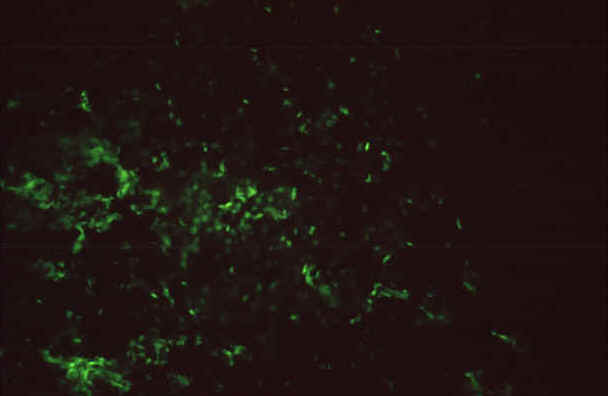Rocky Mountain spotted fever laboratory findings
|
Rocky Mountain spotted fever Microchapters |
|
Differentiating Rocky Mountain spotted fever from other Diseases |
|---|
|
Diagnosis |
|
Treatment |
|
Case Studies |
|
Rocky Mountain spotted fever laboratory findings On the Web |
|
American Roentgen Ray Society Images of Rocky Mountain spotted fever laboratory findings |
|
Rocky Mountain spotted fever laboratory findings in the news |
|
Directions to Hospitals Treating Rocky Mountain spotted fever |
|
Risk calculators and risk factors for Rocky Mountain spotted fever laboratory findings |
Editor-In-Chief: C. Michael Gibson, M.S., M.D. [1] Associate Editor(s)-in-Chief: Ilan Dock, B.S.
Overview
A diagnosis of Rocky Mountain spotted fever is based on a combination of clinical signs and symptoms and specialized confirmatory laboratory tests. Other common laboratory findings suggestive of Rocky Mountain spotted fever (RMSF) include thrombocytopenia, hyponatremia, and elevated liver enzyme levels. There are three tests which are predominantly used for the diagnosis of RMSF, immunofluorescence Assay (IFA), polymerase chain reaction (PCR), and immuno-staining. IFA is considered to be the "gold standard" in testing for the disease. It's important to consider that the most effective treatment for RMSF occurs when diagnosis and medical therapy begins within the first 5 days, early symptoms. Unfortunately however IFA can't usually detect IgG antibodies until 7-10 days of illness. Thus it is of utmost importance to successfully diagnose and begin medical therapy initially, even prior to confirmation by lab testing. [1]
Laboratory Findings
- Although it is technically feasible, specific rapid laboratory confirmation of early Rocky Mountain spotted fever is rarely done. Therefore, treatment decisions should be based on clinical clues, and should never be delayed while waiting for confirmation by laboratory results. Fundamental understanding of the signs, symptoms, and epidemiology of the disease is crucial in guiding requests for tests for Rocky Mountain spotted fever, sample collection and submission, and interpretation of laboratory results.
- Routine clinical laboratory findings suggestive of Rocky Mountain spotted fever may include abnormal white blood cell count, thrombocytopenia, hyponatremia, or elevated liver enzyme levels.
- Serologic assays are the most widely available and frequently used methods for confirming cases of Rocky Mountain spotted fever.
- The indirect immunofluorescence assay (IFA) is generally considered the reference standard in Rocky Mountain spotted fever serology and is the test currently used by CDC and most state public health laboratories, but other well validated assays including ELISA, latex agglutination, and dot immunoassays can be used. [1]

Immunofluorescence assay
- Immunofluorescence assay (IFA) can be used to detect either IgG or IgM antibodies.
- Blood samples taken early (acute) and late (convalescent) in the disease are the preferred specimens for evaluation.
- Most patients demonstrate increased IgM titers by the end of the first week of illness.
- Diagnostic levels of IgG antibody generally do not appear until 7-10 days after the onset of illness.
- It is important to consider the amount of time it takes for antibodies to appear when ordering laboratory tests, especially because most patients visit their physician relatively early in the course of the illness, before diagnostic antibody levels may be present.
- The value of testing two sequential serum or plasma samples together to show a rising antibody level is very important in confirming acute infection with rickettsial agents because antibody titers may persist in some individuals for years after the original exposure to any of a number rickettsial agents. *IgG antibodies are more specific and reliable since other bacterial infections can also cause elevations in riskettsial IgM antibody titers. [2]
- Although an IFA is the preferred diagnostic test, it lacks the ability to distinguish between R.rickettsii and other species of Rickettsiae that cause human infection (spotted fevers).
Polymerase chain reaction
- The most rapid and specific diagnostic assays for Rocky Mountain spotted fever rely on molecular methods like polymerase chain reaction (PCR) which can detect DNA present in 5-10 rickettsiae in a sample.
- While organisms can be detected in whole blood samples obtained at the acute onset of illness in a few hours, rickettsial DNA is most readily detected in fresh skin biopsies like those used in immuno-staining procedures.
- PCR methods can be R.rickettsii specific but are usually confirmed by DNA sequencing of the amplified gene fragments.
- Consequently, this procedure is more specific than antibody-based methods which are often only genus or spotted fever group-specific.
- Specified diagnosis can also be confirmed by isolation of R.rickettsii from clinical samples like whole blood and biopsies.
- Isolation may require several weeks, but isolates are very important for investigating differences in the pathogenic properties and antimicrobial resistance of rickettsiae which cause disease in different parts of the United States. [2]
- Sensitivity levels are inferior when detecting R.Rickettsii DNA in blood smears.
Immuno-staining
- Immuno-staining is involves taking a skin biopsy of the rash from an infected patient prior to therapy or within the first 48 hours after antibiotic therapy has been started.
- Rickettsiae are focally distributed in lesions of Rocky Mountain spotted fever, this test may not always detect the agent.
- Immuno-staining may also be used to test tissues obtained at autopsy and has been used to confirm Rocky Mountain spotted fever in otherwise unexplained deaths (see figure).
- The Centers for Disease Control and Prevention offer immuno-staining to test for RMSF at a few state health departments, university-based hospitals, as well as commercial laboratories in the United States. [2]
References
- ↑ 1.0 1.1 Rocky Mountain Spotted Fever Information. Centers for Disease Control and Prevention (2015). http://www.cdc.gov/rmsf/ Accessed on December 30, 2015
- ↑ 2.0 2.1 2.2 Rocky Mountain Spotted Fever Symptoms. Centers for Disease Control and Prevention (2015). http://www.cdc.gov/rmsf/symptoms/index.html Accessed on December 30, 2015